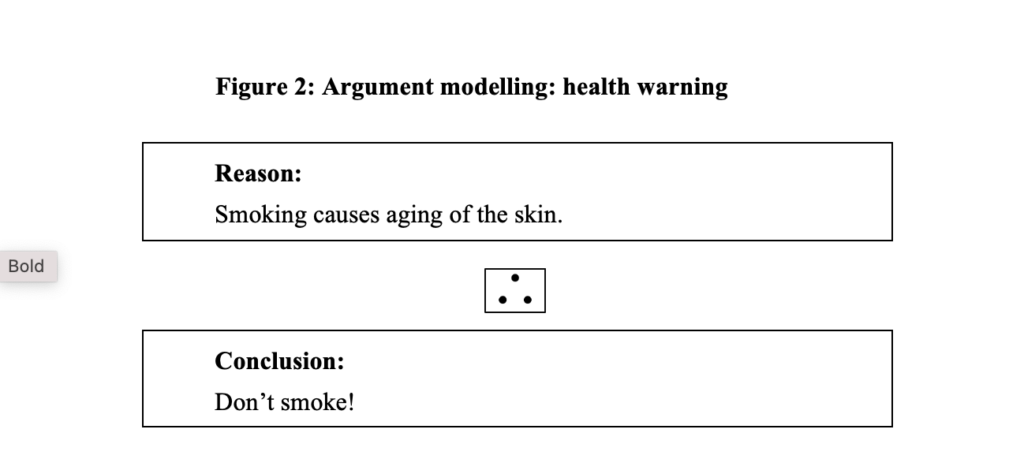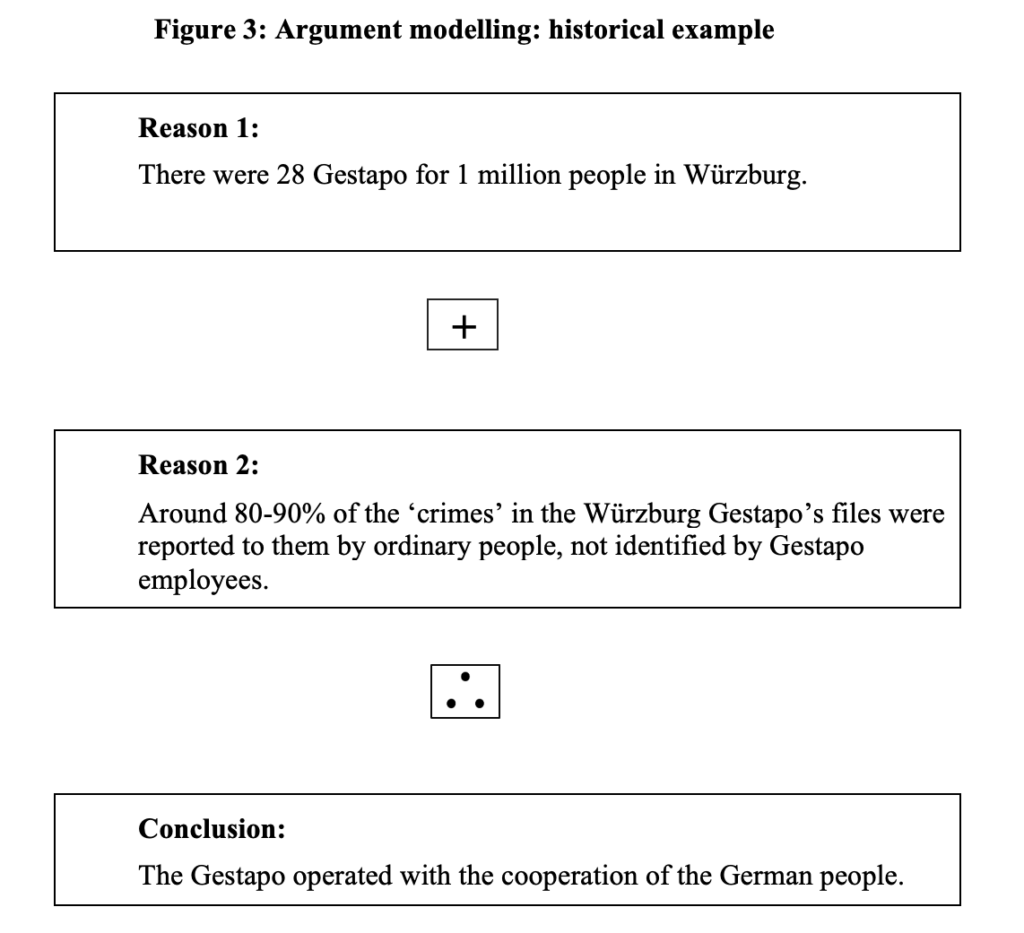Associate Professor of History in Education, Arthur Chapman, helps us understand the importance of argument and reasoning in the history classroom. He also provides some practical ideas to show you how to help your pupils to argue more effectively.
Why Argument Matters
The past doesn’t exist – it’s gone. We are left with traces and we construct our knowledge of the past by reasoning about those traces and by advancing claims to know on that basis.
It stands to reason, then, that we should spend time focusing explicitly on argument in the history classroom. We can do this by focusing on the traces of the past and on building arguments with them, by working with ‘evidence’.
We can do this by helping children understand and evaluate the arguments that historians and others have made about the past, by working with historical interpretations. I focus on the second – interpretive arguments – here.
Analysing arguments presupposes recognising argument.
A number of approaches and scaffolds have been proposed to develop pupils’ understandings of inference – for example, Claire Riley’s ‘Layers of Inference’ scaffold, that drew on Hilary Cooper’s research on primary school children’s historical reasoning and that has been widely adopted and adapted since.
The approach that follows below aims to explore ‘inference’ explicitly by developing pupils’ understanding of what arguments are and by helping them model the logic of arguments. It does so drawing on strategies associated with ‘critical thinking.’
Understanding Argument
“An argument is a connected series of statements intended to establish a proposition.”
(Monty Python, 1972)
Arguments attempt to establish something – a conclusion.
Arguments aim to convince readers of their conclusions by providing supporting reasons.
Conclusions can be of various types – an argument might aim to convince you that you should do something, that you should believe something, that you should like something, that you should explain something in a particular way, and so on.
Reasons can be of various kinds also – factual evidence, statements of principle, and so on.
As a minimum, then, an argument must consist of at least one reason and a conclusion that the reason is held to establish through inference.
A more complex argument might contain two or more reasons. The kinds of argument that we typically encounter in everyday life and in historical works combine many simple and complex arguments into larger wholes.

To understand an historian’s argument, you need to:
a) identify their conclusion – what the historian wants you to believe about the past;
b) identify their reasons – the evidence that the historian offers in support of their conclusion; and
c) understand how a) and b) fit together – for example, how b) is meant to provide support for a).
Students often find it difficult to recognise an argument when they see one – a necessary first step before they begin to analyse argument.
One can do this with simple texts that are common in everyday life, for example, this government ‘health warning’ that used to appear on cigarette packets: ‘Smoking causes aging of the skin.’ In this case we are offered a ‘reason’ not to smoke, and it is explicitly stated, and we are left to draw the conclusion for ourselves.
Figure 2 models the argument explicitly:

Once students are clear about what ‘argument’ means, they can be asked to identify them in the work of historians – in books, in TV documentaries, and so on.
Examples of historians’ arguments can be found in many places – in books, articles, documentaries, and so on. An example is modelled below.
This is based on comments made by the historian Robert Gellately about the Gestapo in episode 2 of the BBC documentary The Nazis: A Warning from History (1997) and it can be viewed in the documentary or read in the ‘book of the film’ (Lawrence Rees, 1997, The Nazis: A warning from history, p.64-6).
In his comments, Gellately summarises key arguments made at greater length in his books about the ways in which policing worked in Nazi Germany.
The logic of his argument, as it is presented in the documentary, works something like the argument modelled in Figure 3.

Evaluating Historians Arguments
A good argument is one whose reasons succeed in providing grounds for accepting its conclusions. How can we help students decide if the conclusions that historians offer are warranted by the reasons that they advance?
Two questions – developed by Roy van den Bring-Budgen – can help us here, perhaps.
Evaluating argument: The ‘alternative conclusions’ test
Once we have modelled an historian’s argument, and are clear about the conclusions that are drawn and the evidence from which they are drawn, and once we have established that the ‘reasons’ given do provide grounds that make the conclusion plausible, we can then ask the following question: ‘Can alternative and equally plausible conclusions be drawn from this evidence?’
If equally credible alternative conclusions can be drawn, then the argument is not a very convincing one. If, on the other hand, the only really credible conclusion that can be drawn is that one that has been drawn then we have a strong argument.
To return to the summary of one of Robert Gellately’s arguments about ‘terror’ in Nazi Germany summarised in Figure 3 above. One item of evidence that Gellately adduces is the following fact, established by his research in the archives in Würzburg.
Around 80-90% of the ‘crimes’ in the Würzburg Gestapo’s files were reported to them by ordinary people, not identified by Gestapo employees.
What can we infer from this ‘fact’ about relationships between the people of Würzburg and the Gestapo? Gellately’s inference from this (as summarised in Figure 3 above) is the following:
Gellately concludes that the Gestapo operated with the cooperation of the German people.
Are alternative and equally plausible conclusions possible? Here is one A Level student’s reaction to this claim that both posits an alternative conclusion and supports it with reasons.
Denunciations are clearly an example of the German people hiding from the Nazi authorities, it is likely that the average German person believed that by telling on neighbours around them, they themselves would be cleared of any suspicion and would not be arrested and sent to the concentration camps.
Whether or not this alternative conclusion is as plausible as Gellately’s is debatable. A lot turns on whether or not Gellately would include cooperation through fear in his definition of cooperation (if yes then, arguably, his argument is impervious to this objection).
This point also shows the importance of debating assumptions, concepts and criteria when evaluating historians’ arguments: students should be asked to debate and evaluate definitions of key terms when looking at historical debates – what, for example, would they consider the most defensible definition of ‘cooperation’ to be?

Evaluating argument: The ‘assumptions’ test
A second tool is the assumptions test. We all make assumptions when we argue (when someone says ‘Don’t do that, it’s unhealthy’ for example, they assume that you want to remain healthy).
The problem is that the assumptions that people make, when considering complex historical questions, are often questionable.
The second item of evidence that Gellately adduces in support of the conclusion in (see Figure 3 above) is the following:
There were 28 Gestapo for 1 million people in Würzburg.
This looks like a ‘low ratio’ but that inference depends on an assumption about how terror works and clearly assumes that large numbers of terrorizers are necessary if you are to rule large numbers of people by terror. Is this a credible assumption?
Arguably not. Since 2001 we have come to understand terror rather better than we might wish to and students would very probably be able to debate the question ‘How many people would you need to terrorise a city of 1,000,000+?’ in quite an informed manner.
The answer – if the terror caused by the 2001 Anthrax attacks is anything to go by – ‘1’ person can be sufficient to terrorise many millions of people, in the right circumstances.
It is arguable, also, that further assumptions are made in Gellately’s argument at this point. First, one might ask: ‘Is it important that the Secret Police were secret?’
Historians, scrutinising Gestapo files in the archive now, can know how many Gestapo there were in the Nazi period. Is this something that ‘ordinary Germans’ could have known at the time?
It is also assumed (again, in the simplified version of the argument embodied in interview comments to the BBC) that we can draw conclusions about terror from data about the Gestapo alone.
Here are two arguments by A Level students on this topic that suggest that fuller contextual evidence needs to be adduced before a conclusion can be drawn
Student 1: ‘Well evidence can be interpreted in different ways, for example the Gestapo in Germany was very short-numbered, and some people could say they could still terrorise because there’s people in camps.’
Student 2: ‘The oppressive nature of the police force within the Nazi state… led to a climate of fear. As Michael Burleigh states ‘Terror both neutralised political opponents and repressed the wider population through a more pervasive insecurity’…’
Summary
The strategies described above aim to focus students’ attention firmly on one of history’s central features – inference and reasoning from evidence to claims about the past.
They are based on the assumption that if we want students to reason effectively – and to analyse the arguments that others make – then we need to give them the tools that they need and the opportunity to put them to use.
One can call this teaching critical thinking and one might also simply call this teaching logic.
There is much more to be said than has been said here, of course, and there are many more tools that students will need to analyse and evaluate historians’ arguments effectively.
Hopefully, these are fruitful suggestions about one of the ways in which we might get started on this important and interesting task.


Arthur Chapman is an Associate Professor of History in Education at UCL Institute of Education.






